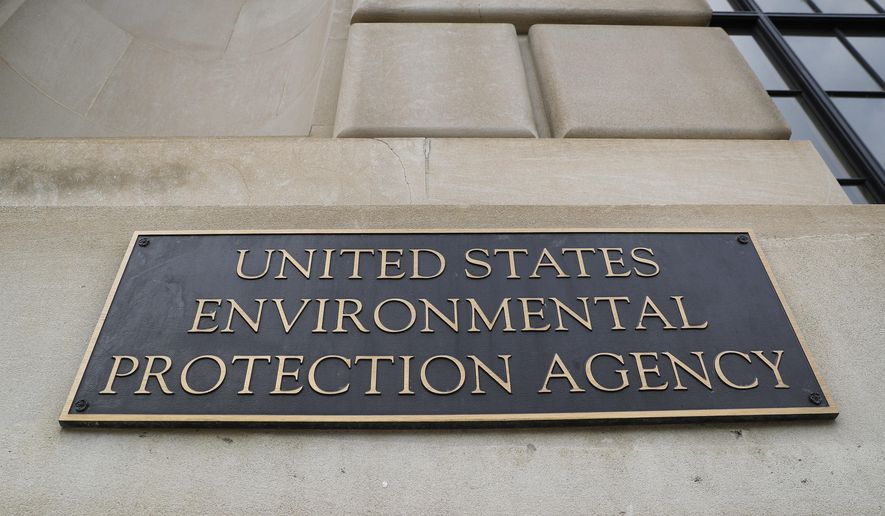The Environmental Protection Agency released one of its last major rollbacks under the Trump administration on Tuesday, limiting what evidence it will consider about risks of pollutants in a way that opponents say could cripple future public health regulation.
EPA Administrator Andrew Wheeler said the new rule, which restricts what findings about toxic materials and other threats the agency can consider in crafting health protections, was made in the name of transparency about government decision-making. “We’re going to take all this information and shine light on it,” Wheeler said Tuesday while unveiling the terms of the new rule in a virtual appearance hosted by a conservative think tank.
“I don’t think we get enough credit as an administration about wanting to open up … to sunlight and scrutiny,” Wheeler said of the Trump administration, which has already rolled back dozens of public health and environmental protections.
Opponents say the latest rule would threaten patient confidentiality and privacy of individuals in public health studies, and call the requirement an overall ruse to handicap future regulation.
The kind of research findings that appear targeted in the new rule “present the most direct and persuasive evidence of pollution’s adverse health effects,” said Richard Revesz, an expert in pollution law at the New York University School of Law.
“Ignoring them will lead to uninformed and insufficiently stringent standards, causing avoidable deaths and illnesses,” Revesz said in a statement.
Wheeler said the rule will go into effect Wednesday, just one day after its final terms were made public, an unusually brief period. The change comes after hundreds of thousands of earlier objections from scientists, public-health experts, regulators, academics, environmental advocates and others in public hearings and written remarks, in some of the strongest protests of a proposed EPA rule change.
Wheeler signed the rule last Wednesday. The EPA declined requests to release it until Tuesday.
The new regulation would restrict regulators’ consideration of findings from public health studies unless the underlying data from them are made public. The rule deals with so-called dose response findings, which look at harm suffered at varying exposures to a pollutant or other toxic agent.
Some industry and conservative groups have pushed for the change for decades, calling public health studies that hold confidential potentially identifying data about the test subjects “secret science.”
The change could limit not only future public health protections, but “force the agency to revoke decades of clean air protections,” Chris Zarba, former head of the EPA’s Science Advisory Board, said in a statement.
Wheeler said Wednesday that the increased requirement for public disclosure would only increase public acceptance of EPA regulation.
Public health studies - such as Harvard’s 1990s Six Cities study, which drew on anonymized, confidential health data from thousands of people to better establish links between air pollution and higher mortality - have been instrumental in crafting health and environmental rules. The Six Cities study led to new limits on air pollutants under the Clean Air Act.
Wheeler was equivocal Tuesday on tossing out that pivotal study in particular as a basis for health rules. “It can still be used and probably will be used,” he said. “It could still pass muster.”
A senior Biden transition official, speaking on condition of anonymity because the official was not authorized to speak on the record, said the Trump administration appeared to be rushing to dismantle crucial federal regulations before leaving office Jan. 20.
The new limits on considering scientific findings were among many Trump changes that would “make it more difficult for the next administration to rebuild government to do its job,” the senior transition official said. Other rollbacks this week gutted protections for birds from unintentional killings by industry and aimed to open up formerly protected areas of the Arctic wilderness for oil and gas leasing.
The EPA’s final rule also deleted a section from its original proposal that would have specifically required regulators to consider a questioned scientific model backed by proponents of a theory that radiation and similar threats are not harmful at low doses, and can be beneficial. The scientific community for decades has held that all exposure to the most damaging form of radiation has risks.
The Associated Press first reported on expert concerns about that part of the rule. The EPA at the time denied any link to the controversial theory. However, the Los Angeles Times, citing emails obtained under open records laws, later reported that the theory’s most prominent backer, a toxicologist named Edward Calabrese, had worked with EPA officials in crafting that section of the rule.
The EPA final rule released Tuesday cited “significant comment” in opposition in saying it had removed those specific mentions.
The EPA has been one of the most active agencies in carrying out President Donald Trump’s mandate to roll back regulations that conservative groups have identified as being unnecessary and burdensome to industry.
Many of the changes face court challenges and can be reversed by executive action or by lengthier bureaucratic process. But undoing them would take time and effort by the incoming Biden administration, which also has ambitious goals to fight climate-damaging fossil fuel emissions and lessen the impact of pollutants on lower-income and minority communities.




Please read our comment policy before commenting.